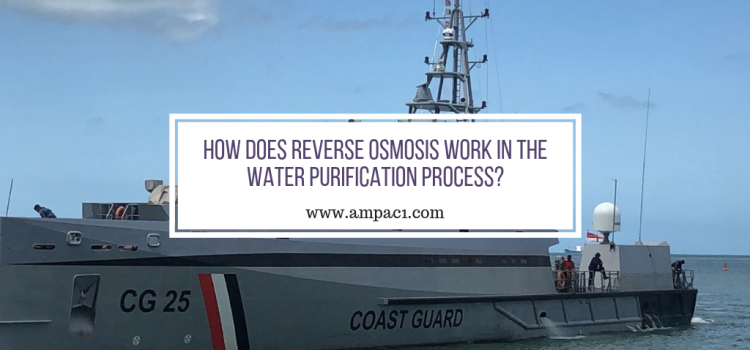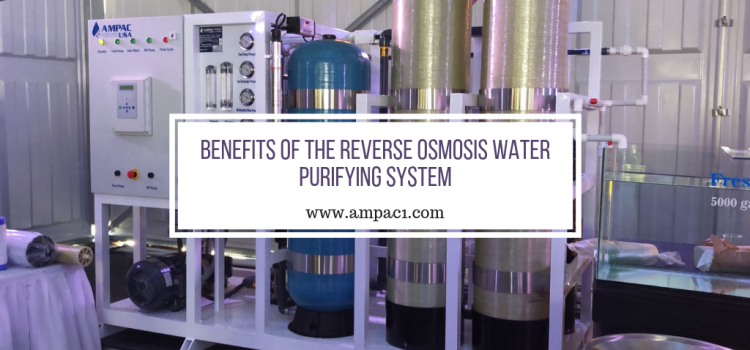Conserving Commercial Reverse Osmosis Water in COVID19 Times
About 2 billion people live in nations with high water stress. The COVID19 has made things worse. It’s time we think about conserving commercial reverse osmosis water. As water is an integral part of our lives, it cannot be replaced, it can only be conserved. The supply of fresh water is dwindling, and the toxins in the environment are increasing. Hence, water has become a precious commodity all across the globe.
The Impact of COVID19
COVID19 crisis has forced people to realize the importance of environment, cleanliness and basic hygiene habits. People have understood how they can protect the environment by staying at home. They have also learned that basic hygiene and cleanliness habits are essential to avoid dangerous diseases. As a result, more and more people are thinking of conserving water for a better future.
10 Ways of Conserving Commercial Reverse Osmosis Water in COVID19 Times
Think of Cooling Towers
If you want to save water in a commercial establishment, make sure you consider cooling systems like submeter cooling towers or evaporative cooling towers. The former will identify leaks or overflows. It will also use digital monitoring and analytics to offer insights on additional water and energy savings. The use of smart meters and IoT sensors and analytics can help detect trends and anomalies. The latter, as the name suggests, would evaporate about 20 to 50 percent of an establishment’s water. It then evaporates 70% of circulating water to ensure that the heat is removed from a building. An evaporative cooling system needs the submeter to ensure the building isn’t charged for it. You can save hundreds or even thousands of dollars per month by availing evaporation credits.
Consider a Water Audit
You must consider a water audit regularly. It’s a simple process wherein an expert or a group of experts (depending on how large a facility is) will examine the water and mechanical systems such as fixtures, plumbing systems, cooling systems, irrigation systems, hot water systems and other such components. They also review the water and energy bills as well as historic system repair bills. The report of the audit might suggest changes that can help conserve commercial reverse osmosis water. A water audit could be paid or free.
Go for Speed Pumps
Some commercial establishments use booster pumps to ensure adequate water pressure on the upper floors. It can lead to excess pressure on lower floors and might lead to problems like ruptured pipes, limescale formation and damaged fixtures. A simple solution in such a scenario is to opt for variable speed pump installation as they balance water pressure and reduce the energy needed to maintain adequate flow of water on all floors. The speed pumps are also amazing when it comes to circulating hot water systems too as less energy is needed when circulating reduced water. You save repair costs and save on energy bills when choosing speed pumps.
Ponder Smart Irrigation
If you are into irrigation, you need smart meters that offer insights on water use at different stations and help ensure granular monitoring of certain areas. You might seek irrigation credits and reduce water costs. You can also consider soil moisture sensors that provide real-time data which prevents overwatering and help reduce water use when it’s raining. Smart irrigation helps reduce water use considerably and can save hundreds or even thousands of dollars per year.
Choose Water Efficient Fixtures
Another smart way to conserve commercial reverse osmosis water is to change the fixtures like 1.28 gallons per flush toilets. This small change can lead to massive water savings, especially if you were using a model that flush with 5 gallons of water. In addition to flush, you can find water-efficient fixtures for urinals, aerators and faucets. Choosing faucets with electronic sensors that stop water if not needed, is also smart. Aerators can also help save water by up to 30 percent. While opting for these changes, you may also want to seek municipal rebates.
Reuse Condenser Water
As commercial recovery systems produce a lot of condensed water which is collected on piping, it’s reuse is a smart idea. It can be reused in evaporative cooling towers. If you want to conserve water in a commercial establishment, you should also reuse condenser water. This option will help you reduce water costs. The low-mineral content of the condensed water will improve the conductivity of circulating water in cooling systems and will extend the use of water. Consider installing a digital meter on condenser water collection lines to ensure that the contribution is regularly monitored. If you have large-sized equipment and heavy daily load, the captured condenser water might save hundreds of thousands of gallons of water per year.
Buy Smart Sensors and Meters
If you want to save commercial reverse osmosis water, buy a few smart meters and sensors. They will help in improving the monitoring process further and will allow you to improve efficiencies. As water use varies in commercial buildings depending on the purpose, seasons and schedules, regular monitoring via smart sensors and meters would allow you to ensure that you have IoT water monitoring. It is a better option than water readings collected on a monthly basis by the local municipalities. The major side effect of that method was leaked. Also, unexpected water use was never tracked.
Real-time monitoring will allow you to understand water use for various purposes like cooling towers, boilers, pools, irrigation, showering areas and so on. When you use AI sensors and meters for monitoring, the detection of abnormal water use would be quite quick, and you will get an email alert regarding the same as soon as possible. The patterns established by AI meters will allow you to calculate exactly how much water you have saved if you are making efforts in this area.
Assess the Landscape Water Consumption
Though native plants are beneficial for commercial establishments, especially establishments like hotels or resorts where it’s all about the presentation, you would be wise to access the landscape water consumption and replace the landscaping activities that need water in abundance. For instance, turfgrass needs frequent watering, mowing, and even chemicals to look good. So, it’s smart to replace it with an alternative. You can go for hardy native or adapted species of plants that look good and need minimal water. You can also go for perennial plants that live for many years. In case you want to have fountains and water features that often consume large volumes of water thanks to evaporation, frequent draining and cleaning, you should consider a physical water conditioner that will lead to lowering the maintenance and eliminate the need of chemicals.
If you have a landscape feature that needs water sprayed into the air, you need to replace the nozzles to ensure minimal water is used for that purpose. You also need to winterize ponds and fountains in cold weather seasons to reduce maintenance and use less water for those months.
Select Water Conditioning
If you don’t want to opt for chemical treatment, you can choose physical water conditioning to improve the water. When pressure or temperature changes occur in cooling towers, water heaters spray heads and other areas of water systems, the dissolved minerals in well water or municipal water naturally precipitate. Dissolved chemical concentration often leads to limescale. Physical water conditioners make use of a frequency that travels through water and leads to bonding of mineral ions and calcium. This process ensures that dissolved calcium precipitates into microscopic particles that cannot accumulate as scale on surfaces.
The prevention of limescale helps ensure that cooling towers and boilers operate efficiently. It also reduced water consumption. The use of fewer chemicals in physical water conditioning is also a useful benefit. When fewer chemicals are used, the water discharged from a cooling tower can be repurposed so that it can be reused for irrigation.
Add Rainwater Harvesting to Your List
Rainwater harvesting is a tried and tested method of saving water. You should choose it by doing simple changes like adding a rainwater catchment system for watering lawns and landscapes. Rainwater harvesting is an abundant resource in most regions and can be a key element of your sustainable water supply strategies for local communities. As water resources are stretched continually to accommodate economic development and growth of population, you must trust rainwater harvesting to reduce the long term demand of commercial reverse osmosis water.
Be Smarter- Choose the Right Commercial Reverse Osmosis Systems
After you have learned about all options available when it comes to conserving commercial reverse osmosis water in covid19 times, it’s time you also learn to be smarter and choose the right commercial reverse osmosis systems. AMPAC USA is a leading provider of commercial reverse osmosis water purification systems that can be used for hydroponics, drinking water stores, restaurants, coffee shops, breweries, wineries and even homes supplied by borewell water.
Broader applications include boilers, humidifiers, seafood processing, dairy products, metal preparation and washing for automotive and aerospace, and dialysis systems. Loyal clients worldwide trust AMPAC USA Systems for our reliability, serviceability, and consistent performance. We design systems that need minimum user intervention thanks to unparalleled system architecture, technical design and build quality.
Powder-coated welded aluminum is the standard for all frames. At the same time, industrial-grade stainless steel pressure vessels and fastening hardware provide the structural strength and corrosion resistance appropriate for a world-class commercial appliance. Commercial Reverse Osmosis Systems by AMPAC USA help scores of commercial establishments get pure water. For inquiries, call us on 909-548-4900.
Sources:









